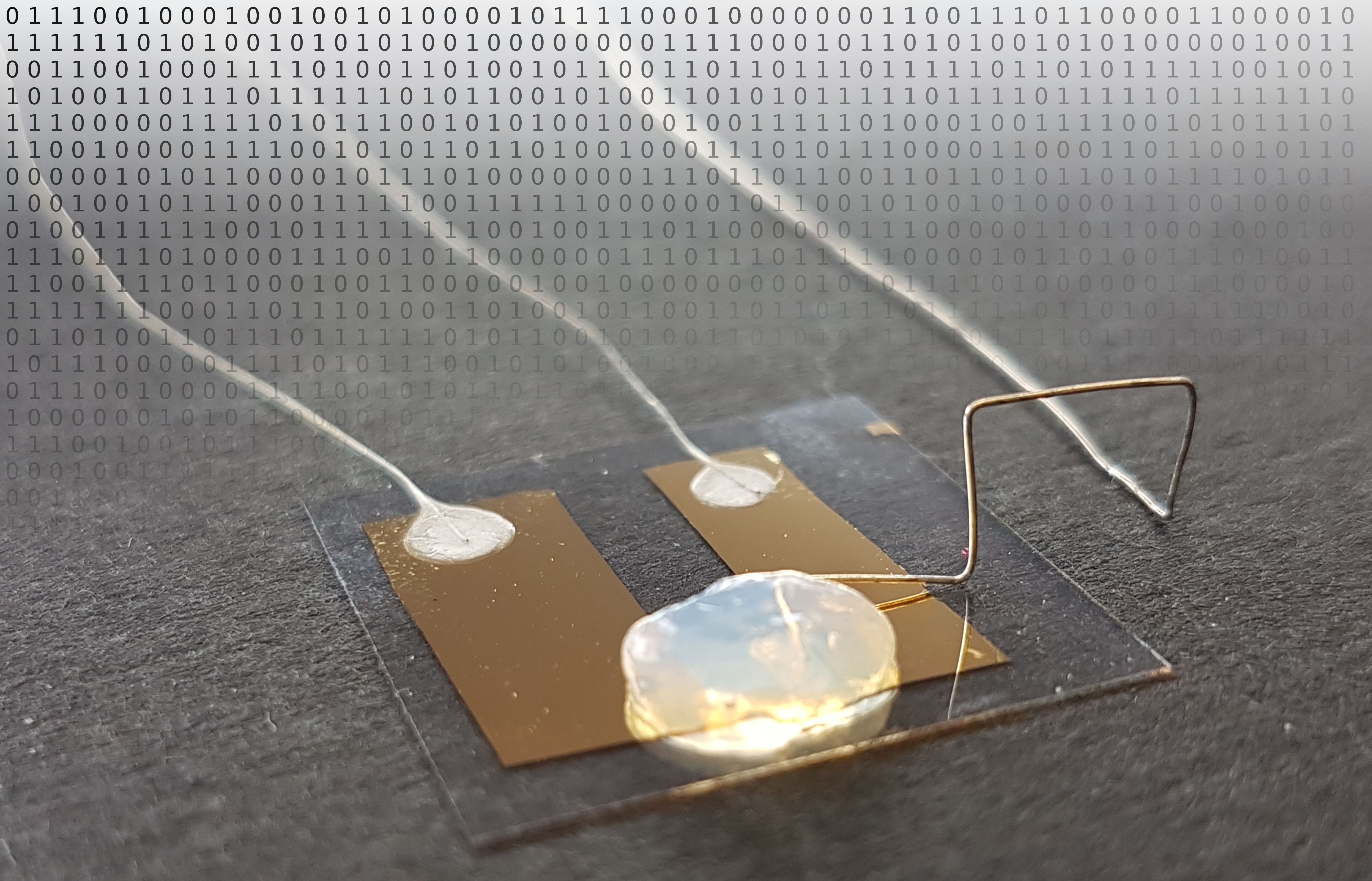By Jean-Jacques DeLisle, contributing writer
A research team at the Karlsruhe Institute of Technology (KIT) claims the smallest transistor that can switch power with a single atom in a solid electrolyte. Transistors are a fundamental component in almost all electronics used in our daily lives. Everything from radios and TVs to smartphones and computers contain transistors. At its heart, the function of a transistor is fundamentally simple; it is a device that can switch an electrical signal or amplify it based on how its three terminals are connected to an electrical circuit.
There are many types of transistors, but for the most part, they are fabricated on semiconductor wafers. In the past, most semiconductors have been made from purified silicon or germanium, but recently, a team led by Professor Thomas Schimmel at KIT has been experimenting with electrolytes and other materials to miniaturize the transistor to the point that it functions with only the action of a single atom. The team has been able to control the displacement of a single atom of silver suspended in a gel electrolyte allowing them to switch an electrical current.
In the past, quantum electronic devices have had extreme operating limitations. Many of them required extremely cold temperatures and massive amounts of energy to function, but this is not the case for the new transistor. The transistor created at KIT functions at room temperature and with comparatively very little energy, meaning that it could be used to reduce energy consumption in a wide array of devices. The dramatically lower energy cost could have a huge effect on how data is transferred.

Image: KIT — Institute of Applied Physics/Professor Thomas Schimmel
The researchers cited that information technology consumes up to 10% of energy produced in developed countries. By making the transistors incredibly small and limiting the function to the displacement of a single atom, the researchers believe that the single-atom transistor “could contribute significantly to energy efficiency in information technology in the future.”
“Switching energies is possible with this quantum electronic element, which is a factor of 10,000 below those of conventional silicon technologies,” stated physicist and nanotechnology expert Schimmel, who conducts research at the APH, the Institute of Nanotechnology (INT), and the Materials Science Center for Energy Systems (MZE) at KIT. Considered a pioneer in single-atom electronics, Schimmel is also the co-director at the Center for Single Atom Electronics and Photonics.
The creators of the new transistor explained how it functions in the Advanced Materials magazine. To create the transistor, two extremely small metal contacts are suspended in a gel electrolyte. The contacts are positioned close together with only the width of a single atom between them. A silver atom is also suspended in the electrolyte. By displacing this atom, the current is switched. “Via an electrical control pulse, we push a single silver atom into this gap — the circuit is closed,” said stated Schimmel. “If we push the silver atom out again, the circuit is interrupted.”
By making use of this seemingly simple principle, Schimmel has been able to create a transistor on the smallest of scales, enabling the transistor to switch current via the reversible movement of a single atom.
To develop the single-atom transistor, researchers took a different technological approach to transistors altogether. By constructing the single-atom transistor entirely out of metal, and without semiconductors, its developers managed to make a transistor that could function with extremely low voltages and, therefore, consume very little energy in its operation.
For some time, the single-atom transistor could only function when suspended in a liquid electrolyte, which made it impractical, but Schimmel’s team at KIT has developed for the first time a transistor that works in a solid electrolyte. By creating a gel electrolyte, they were able to achieve the best of both worlds by combining the electrical properties of a liquid electrolyte with the more desirable physical properties of a solid electrolyte.
“Contrary to conventional quantum electronics components, the single-atom transistor does not only work at extremely low temperatures near absolute zero — i.e., –273°C — but already at room temperature,” according to Schimmel. “This is a big advantage for future applications.”
The single-atom transistor is something truly new and may be one of the most practical examples of quantum electronics yet created. Electronics have been becoming smaller and smaller over time as more compact and higher-performance components have been developed. The ultimate result of the process of miniaturizing technology is the creation of single-atom electronic components. The current state of the device, however, is far from a single atom in size. Though it functions via the motion of a single atom, it is only a proof of concept and it could take several years before the technology is ready for mainstream use.
Advertisement
Learn more about Electronic Products Magazine





